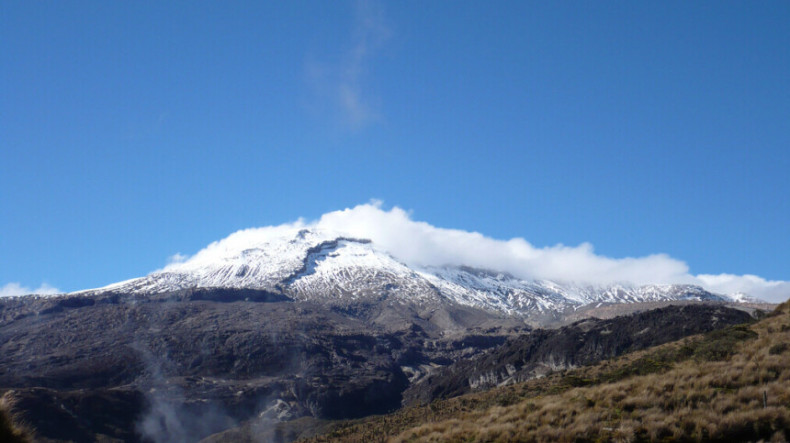
One of world's deadliest volcanos poised to erupt in 'coming days'
One of the world's deadliest volcanos has lain dormant since it last erupted in 1985, but a surge in seismic activity indicates it could awaken in the 'coming days.'
Colombia's Nevado del Ruiz registered an unbelievable 6,000 earthquakes per day last week, leading officials to raise the alert to the second highest scale and evacuate more than 2,500 families in the area, the Daily Mail reported.
Some 57,000 people live in the volcano's hazard zone, which is spread across parts of six provinces, according to Colombia's Geological Service (CGS).
The volcano's eruption in 1985 killed more than 25,000 people, the fourth-deadliest volcanic eruption in human history, leaving people buried under avalanches of earth and rock fragments.
CGS believes last week's earthquakes are due to magma moving through the fault system, setting the stage for what could be Nevado del Ruiz's next deadly eruption.
The Nevado del Ruiz straddles the border between Colombia's Tolima and Caldas provinces.
The volcano, which formed about 150,000 years ago, reaches an elevation of 17,717 feet and sits about 80 miles west of the capital city Bogotá.
It is a stratovolcano composed of many layers of lava that alternate between hardened volcanic ash and rocks.
On November 13, 1985, Nevado del Ruiz spewed hot ash and lava some 23,000 feet into the atmosphere, Earth Magazine reports.
The event caused the ground to rumble, releasing mudflows towering more than 98 feet through the region.
The eruption was not considered large, but heat released during the event, surrounding glacier capping on the volcano, released the deadly mudflow on villages below.
Now that Nevado del Ruiz is showing signs of activity, officials are not taking any chances and evacuating nearby people.
President Gustavo Petro has asked for evacuations to move more quickly.
However, some residents said they do not plan on leaving their homes.
Authorities said that children must evacuate even if adult family members choose to stay.
Before last week's activity, officials said an average of 50 earthquakes per day were recorded, with minor events over the past 10 years.
CGS reported that increased seismic activity was first observed last month, with 6,500 earthquakes on March 28 to 11,000 earthquakes on March 29.
Newsfeed
Videos






























